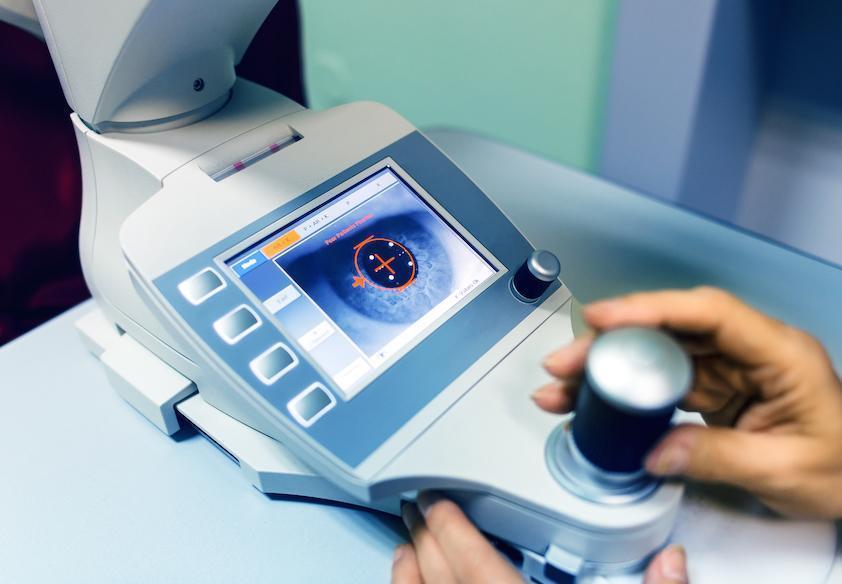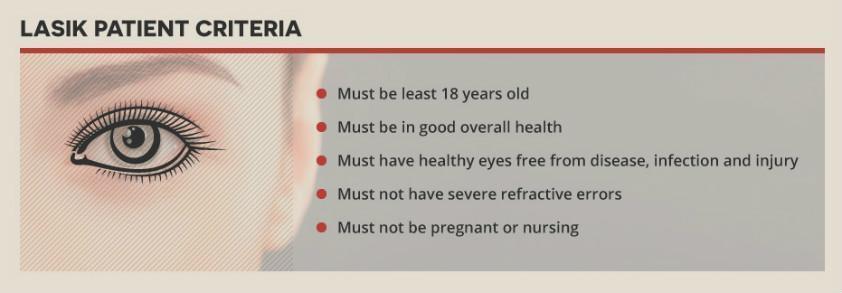If you’re one of the millions who rely on eyeglasses or contacts, chances are you have contemplated undergoing LASIK. The LASIK technique brings numerous benefits including very little pain, no bandages or stitches required and the ability to make future adjustments if vision changes. Not to mention, the main advantage of LASIK is its ability to improve your vision, potentially eliminating the need for corrective lenses.
While achieving 20/20 vision or better is feasible with LASIK, you may be hesitant to undergo the procedure due to potential risks. To alleviate any possible hesitancy you may have regarding LASIK, we want to share some information that you will find valuable when deciding on whether or not LASIK is right for you.
Possible Risks of LASIK
According to the American Academy of Ophthalmology (AAO), approximately 700,000 people in the U.S. undergo LASIK, with the majority reporting they are happy with the results. However, as with any surgery, there are potential risks associated with the procedure. While side effects of LASIK can include loss of vision, it is extremely rare, occurring less than 1% of the time, according to the American Refractive Surgery Council.
Identified risks with LASIK include:
- Dry Eyes
- Vision Disturbances
- Under/Overcorrection
- Flap Issues
- Vision Changes or Loss
Although most of these outcomes are considered temporary and will clear up within a few weeks or months, others can become problematic and long-term.
Dry Eyes
One common immediate side-effect of LASIK is dry eyes, which can cause a reduction in the quality of your vision. Typically this condition resolves within six months or so and may require the use of eyedrops. Postoperative dry eye persists in up to 20% of patients, according to a study in American Family Physician. However, there are effective treatments, including intensive drop therapy and a procedure that implants plugs into your tear ducts. Also, the same study found that only as many as 3% of patients found dry eye symptoms bothersome.
Vision Disturbances
Some patients report having trouble with glare, halos and/or double vision after LASIK. While these disturbances are usually temporary, lasting for a few days or weeks, long-term you may notice your ability to see well at night or during overcast conditions such as fog might be diminished from that of your vision before the procedure. Some 20% of patients may have new visual disturbances, particularly with night driving, according to the American Family Physician study.
Under/Overcorrections
If during surgery the laser removes too little or too much tissue, you may still require glasses or contacts after LASIK. Undercorrection is more common and can potentially be corrected with an additional procedure. Conversely, overcorrection is just as easily fixed as undercorrection.
Flap Issues
During LASIK, a thin flap is created from the surface of your cornea. Once the procedure is complete, the flap is replaced. Complications that may arise include microscopic wrinkles in the flap, abnormal growth of the outermost corneal layer or infection. A study in the Journal of Refractive Surgery indicates the occurrence of flap complications using the IntraLase 15- and 30-kHz Femtosecond Lasers is less than 1%.
Vision Changes or Loss
A decrease or loss of vision may concern those considering LASIK. While a reduction of vision is possible, complete loss of one’s eyesight is extremely rare, with occurrences less than 0.5% of the time, according to the latest research.
Who Shouldn’t Have LASIK
An ideal candidate for LASIK is one who has an average degree of refractive error and no unusual vision or health problems.
Patients who should not have LASIK include those with:
- Vision issues such as:
- Keratoconus
- Eye infections
- Eye injuries or disorders
- Chronic Dry eyes
- Glaucoma
- Cataracts
- Health issues such as:
- Autoimmune disorders
- Diabetes
- Depression
- Chronic pain conditions (IBS, fibromyalgia or migraines)
If you are pregnant, breastfeeding or on certain medications including steroids be aware that these conditions may cause temporary changes in your vision and it is best to wait until your eyesight returns to normal before undergoing LASIK.
Speak to a Doctor About Your Concerns
Millions of LASIK procedures have been performed over the last few decades. With 95% of postoperative patients reporting satisfaction in their results, according to the America Academy of Ophthalmology, it is no surprise that LASIK is the most popular elective surgery worldwide. Just like any medical procedure, there are risks for complications. Those risks are minimal and often easily corrected.
If you’re concerned about the possible complications of LASIK, it’s best to speak to a qualified physician who can address your worries. As with any medical procedure, it is essential that you seek out a qualified and licensed doctor.
The physicians at Southwestern Eye Center have decades of experience and routinely work with LASIK pre- and post-operative patients. If you would like to request more information regarding LASIK and whether you are a good candidate for the procedure, contact one of our trusted physicians to set up a free consultation.

